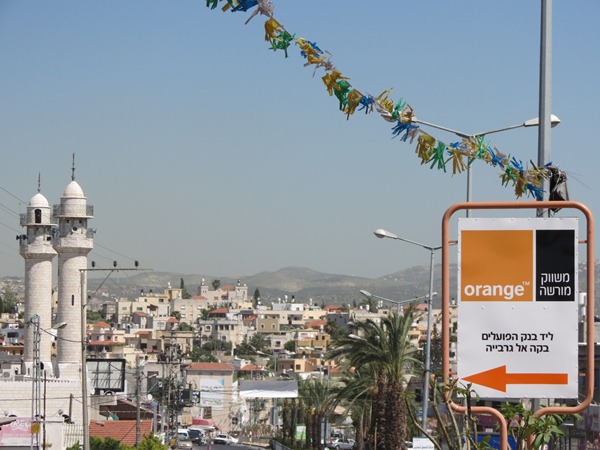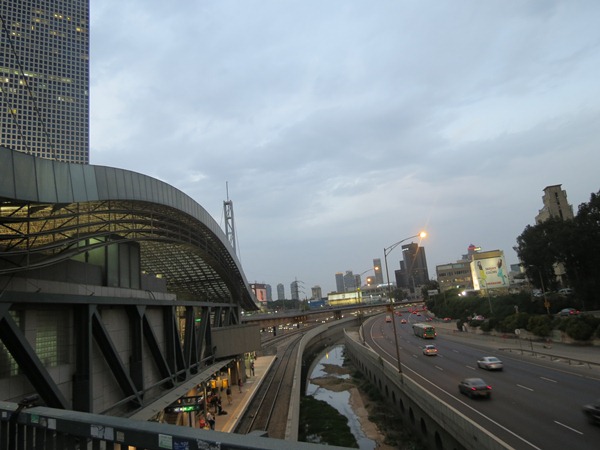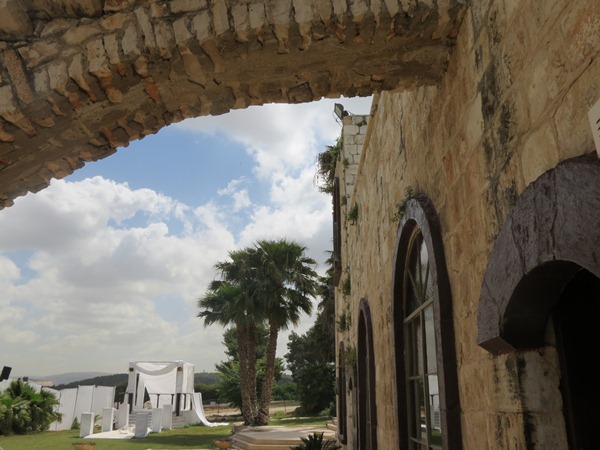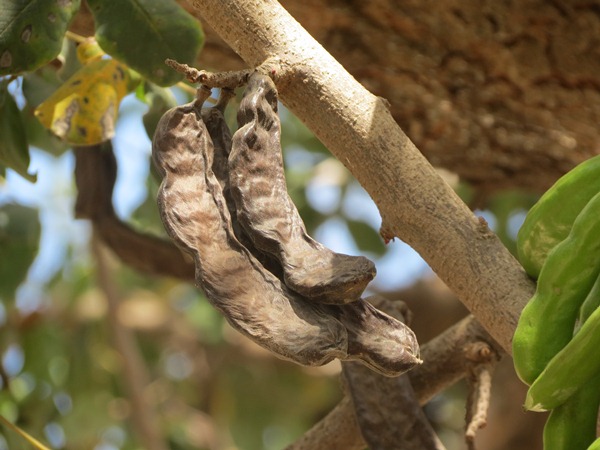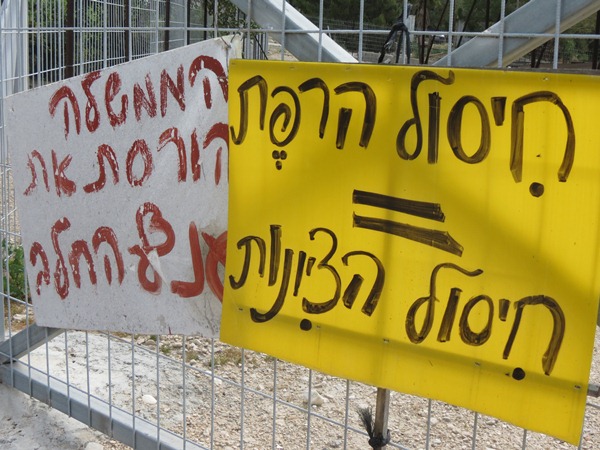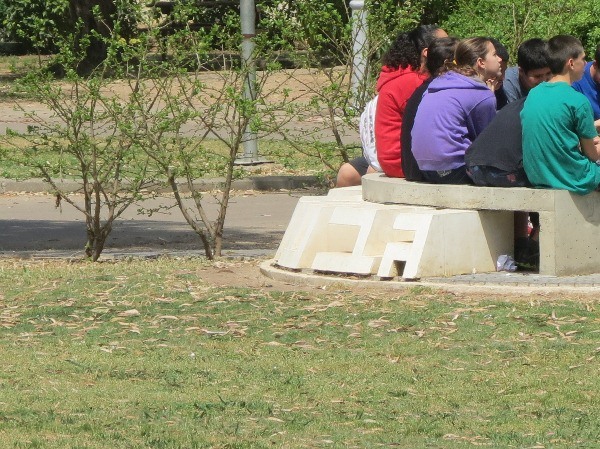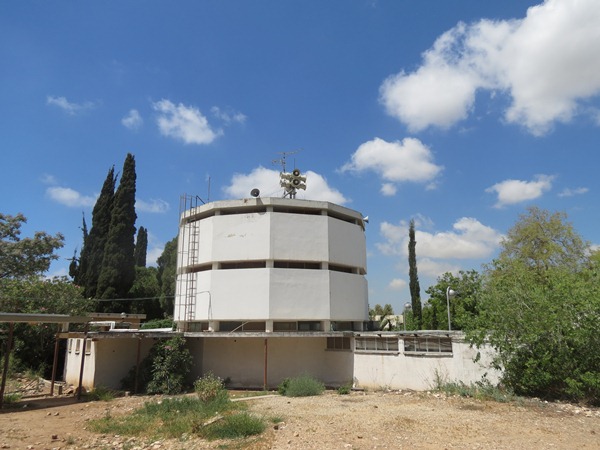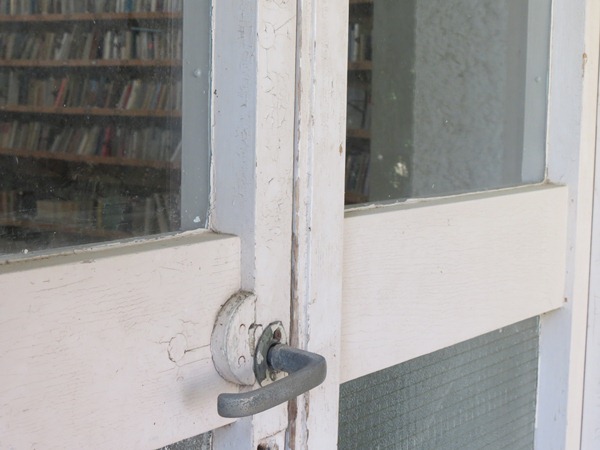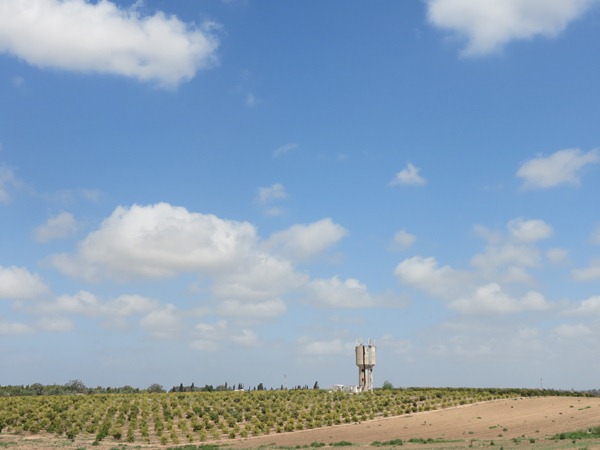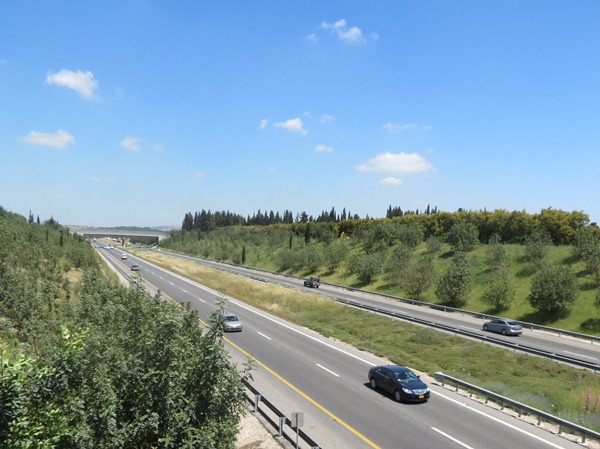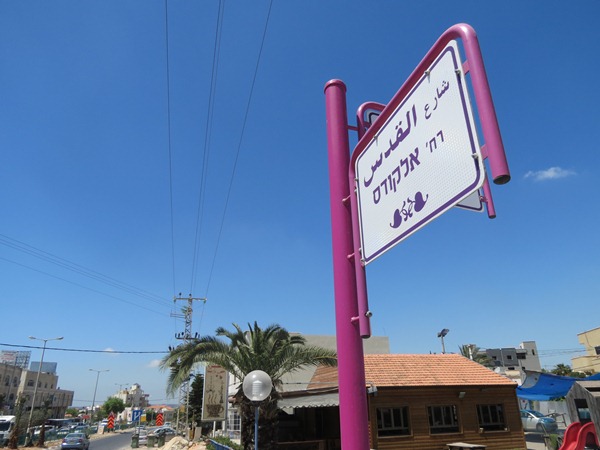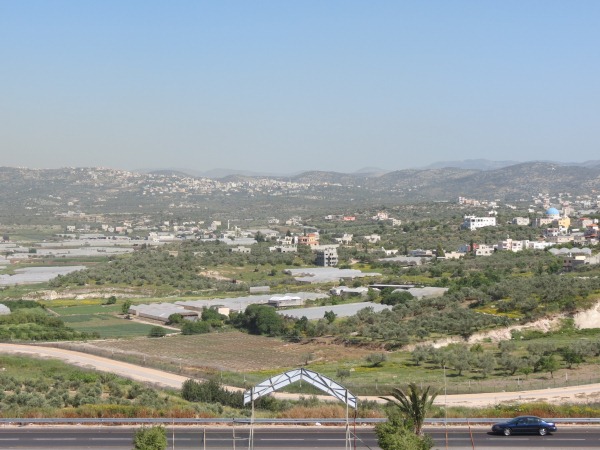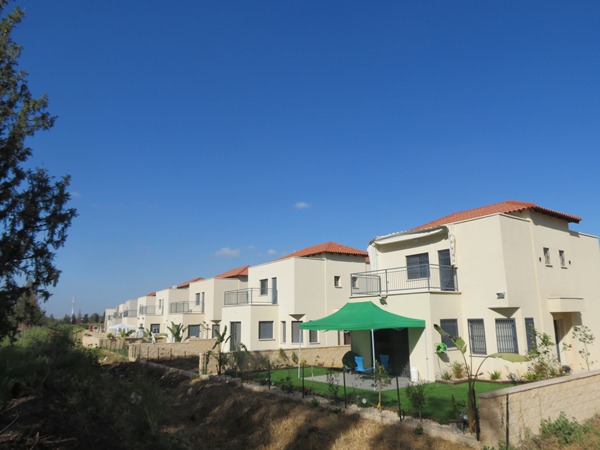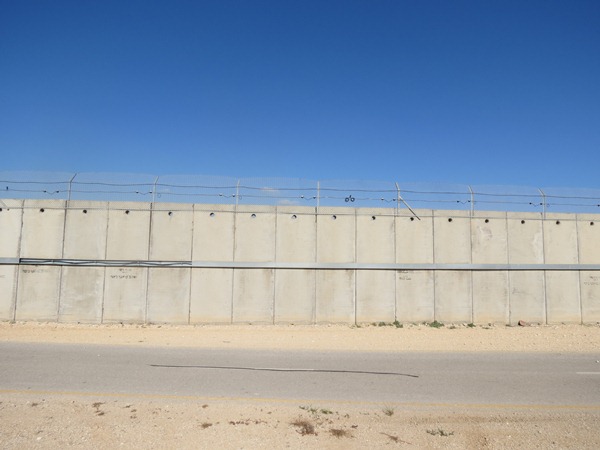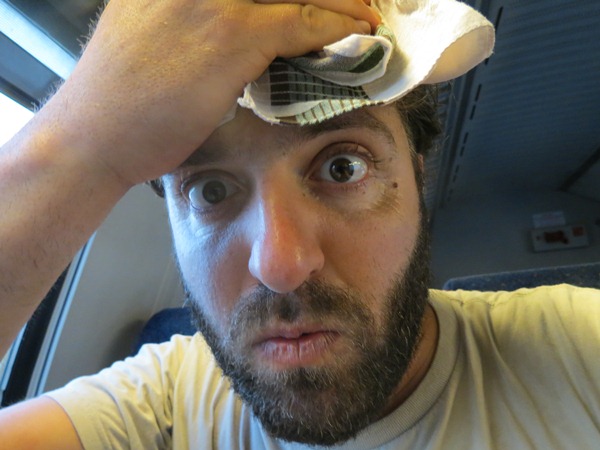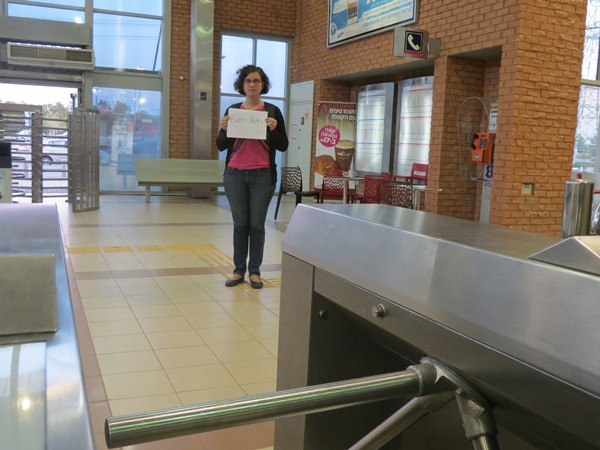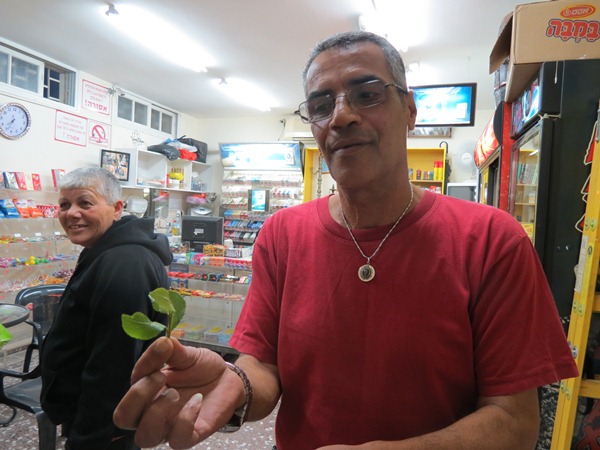Brom Barkai to Rosh Ha’ayin, via a tragic location for charming weddings, an educational paradise, a fallen people’s republic and a Yemenite drug dealership.
At the Border Police monument, Israel becomes exceedingly slender. Less than 20 kilometers separate the Green Line from the sea shore. Here I am also a quick 40-minute drive away from Tel Aviv by sherut (minivan). It only makes sense, therefore, that while exploring the western edge of the West Bank, I’ll spend my nights at home.
The city overwhelms me. Nine days in the countryside caused me to forget its magnitude, and the one night I spent in a city, Jenin, does not prepare me for skyscrapers and freeways. It’s fun to see Ruthie, who buys me a huge ice cream cone on the boulevard. The following morning she hands me a nose handkerchief to take with me on the road.
“What am I supposed to do with this?” I ask
“Wipe the sweat from your forehead.”
On the way back to the monument. The sherut radio is on, and a newscaster speaks about the previous day’s incident in the Jordan valley. It is suggested that before getting his face rammed with an M-16, the Danish demonstrator broke some of the Israeli officer’s fingers. Sorry, but I can’t fathom why and how a man armed with a bicycle and a message of peaceful good will would break the fingers of a solder armed with an M-16, but documented violence calls for justification. Now the officer needs not be sacked, indeed, the internet is already full of texts calling the him a “hero”. Oh well. Orwell.
The first community south of the monument is Kibbutz Barkai. It was founded post 1948 on the site of an abandoned village named Wadi Arra, and a surviving country mansion serves now as the centerpiece of a function garden named “Barkai Fortress.” Here Jewish brides and grooms may tie the knot in a romantic Nakba setting.
The garden’s flowerbeds are watered by Ibrahim, who lives in nearby Umm al Fahm. I ask him how he feels, working at a place this charged. “what can I do,” says Ibrahim, “a man needs to eat. If I had no need to eat, I would never have come here.”
What a way to start a day. I decide to take arms against a sea of troubles, and while crossing the mixed region ahead focus on the positive. To be more specific: I decide to take something good, something of true value, from each town I will pass today, be it Jewish or Palestinian. In Barkai itself I find fresh carob off the tree.
The memory of blessed struggle for change is found here too. By the cowsheds I find signs posted from last summer, protesting the neocon government’s decision to permit mass import of dairy products. Israel’s dairy farmers, many of them veteren kibbutzniks and moshavniks who are strongly identified with canonical Zionist values, took the the cue from the then infant J14 social justice movement. They even came to demonstrate in Tel Aviv among the tents, creating a moving show of solidarity with the younger, more urban social activists, that infused the general struggle with legitimecy.
A short ways down the road is a place that should prove an easy source for goodness. The Givat Haviva seminary was established by socialist Zionist movement Hashomer Hatza’ir, as a center for education on peace. I knew it offers good courses in Arabic language and hosts a variety of positive events, but didn’t realize how sweet the campus would be. With its trilingual signs and gentle public artworks. this place practically reeks of optimism and trust in mankind.
Givat Haviva is named after Haviva Reick, a Slovak born Palmach combatant who parachuted in 1944 into German-occupied Europe. Reick was sent by British operatives along with 36 other brave souls, to support the British war effort and resistence on the ground. Her original mission proved impossible to perform, but now there was no way back. Reick remained in Slovakia and supported Jewish refugees who fled into the partisan-controlled enclave of Banska Bistrica. She was caught by the Germans within less than a year and murdered.
On the campus grounds, a young teacher is telling her class the Reick story. Here is the good thing I will take from here: the face of an attentive girl, learning.
There’s more beauty about, however, such as that of the library building, designed by Israeli architect Samuel Mestechkin, who studied at the Bauhaus school in Dessau.
The doors are unfortunately locked at the moment, but peeking in I can see some of the bookcases and spot the blue and gray spine of a tome of poetry I love. These are the poems of Yiddish beatnik baledeer Itzik Manger. No need for a key, I know many of them by heart.
לאמיר-זשע זינגען פשוט און פראסט
פון אלץ, וואס איז היימיש ליב און טייער:
פון אלטע בעטלער, וואס שעלטען דעם פראסט
און פון מאמעס, ווס בענטשן דאס פייער.
Let us sing together simply
Of all that is moving and brings the heart higher,
Of old beggers who curse the frost,
And of mothers who bless the fire.
From Givat Haviva the road goes on to the large Palestinian Israeli city of Baka. The view along it is sweet.
And it is broken by a picture perfect freeway, the “Israel Turnpike”. This toll highway was dreamed up by Shimon Peres in the 1990s to run from Cairo to Damascus in a “new Middle East, but which currently doesn’t quite reach Beer Sheva to the south, and ends just before Haifa to the north. Besides, a “picture perfect freeway is always an oxymoron. The Israel Turnpike runs more or less paralel to the fence, but several Palestinian-Israeli communities, such as Baka, are trapped east of it, between two artificial barriers, both of which limit their natural growth.
Baka’s main street is named “Al Quds”, the Arabic name for Jerusalem. Elsewhere in Israel, the name “Al Quds” will appear on signs only in parentheses, following “Ursalim”, a formal Israeli name that is unknown in the Arab world.
Here, however, in a municipality run by Palestinians, the tables have turned, and the Hebrew “Yerushalyim” gives way to “Al Quds” written in Hebrew letters. it is The sight of this empowered street sign that I will take with me from here.
Cute or not, Baka is a Palestinian city and thus underserved by public transportation and difficult to leave. At long last a bus does stop, but it only goes as far as the next town down the road: Jatt.
Sometimes it’s not about where you go, but with whom. Moufid, the bus driver, drops of the last passenger in Jatt, than goes on driving simply so we can keep talking. “I’m on a break,” he says “so it’s fine.” We drive around the same loop over and over. The fence is dramatically close to the road at Jatt. Again and again we descent to it, then rise back to the hill that provides a good view of it and of the West Bank beyond.
Moufid describes the region’s troubles as he sees them. “The old timers are fine,” he begins, “but we have a lot of ‘olim khadashim’, and they cause all the trouble.”
Olim khadashim is a Hebrew term commonly used for Jewish immigrants who arrive in Israel and are repatriated by virtue of the Law of Return. The crowd Moufid refers to is a different one. Israel resettles within its bounds Palestinian collaborators who supported its intelligence mechanism once they begin to “burn.” The collaborators and their families are brought to existing towns, where the local population often feels uncomfortable with their presence.
“But they are not the only problem,” he assures, “our biggest problem is lack of law enforcement. The Shin Bet knows about every bullet that arrives here from the West Bank and elsewhere, trust me, they do, but as long as this bullet is shot in Baka, the police will do nothing, it’s not until it’s shot near one of the kibbutzim that they cry: ‘politically motivated crime!’ and start their sirens.”
And then of course, there is the fence. Which runs very close to Baka’s heart in its more aggressive, concrete wall version. “This barrier has torn families apart. It’s a great tragedy.”
“Someone once told me that Bakaaites are happy about the fence,” I say, “He said it keeps car thieves from driving local bounty into the wild east.”
“Nah, the car thieves already found a way around it. They pay Jewish Israelis to drive the cars across, then pick them up and take them into Area A, where no one can find them. This fence does no good for anyone.”
This friendly but sad conversation is what I will take with me from Jatt. Moufid now drops me off at the southernmost point on our loop. From here I continue mostly by foot to my next destination: Kibbutz Yad Hanna.
Named for another ill-fated WWII paratrooper, Hanna Senesh, Yad Hanna was once known as the most left leaning of kibbutzim. While all kibbutzim started off as communal settlements where Marxist ideas were put to practice, this one remained so pro-Soviet and even Stalinist into the 1950s (despite de-Stalinization in the Soviet Union itself), that a number of its members felt compelled to leave.
Today as I arrive here, the first thing I see is a row of cookie cutter homes.
Unbelievable! niebozmojnoyeh! Has the most communist kibbutz developed an extension that offers the bourgeois dream to outsiders? Some research proves that while many of the new houses were indeed built as a means of salvaging this debt-stricken community, others were built to accommodate settlers expelled from Northern Samaria during the disengagement of 2005.
Could there be anything more wonderful to take from here than the notion that ideological kibbutznicks and ideological settlers can and do cohabitate? I am cheered by this thought, then, a five-minute walk to the west, my cheer vanishes. I have arrived back a the fence, except it’s no longer a fence.
The separation barrier turns opaque where it runs by an urban environment with less space. Behind this wall is the city of Tulkarm. I passed there on the September journey and took with me at the time a sweet souvenir of two peaches. A friendly vendor gave me one of them for free at the market, the other was tossed at my head by another vendor who figured I was Israeli. A short walk away from these two stalls, I can see neither vendors nor any seasonal fruit. There is literally nothing of value I can take from here. Nothing, and God knows I’m trying to keep a positive attitude.
What in this world could uplift me now? I need something stronger than peaches, stronger than carobs, stronger even than fine education or a fine conversation. I need drugs.
There is a town down the road that offers them, legal and yet potent. It is Rosh Ha’ayin, originally settled by Yemenite immigrants in the 1950s. It is there that Qat, a dark green leaf favored in the old country and beloved by scrabble enthusiasts worldwide, is available.
Qat, when chewed, produces a pleasant buzz, as well as a positive effect on men’s verility (not that I need it, ahem). Rosh Ha’ayin is the only one to which I head today lured by the loot. The only problem is transportation. Not only is this region virtually busless, but local Palestinians aren’t in the habit of picking up obviously Jewish hitchhikers and Jewish drivers zoom past intersections where laborers from Tulkarm, licensed to enter Israel, await their evening ride across the wall.
I finally get picked up by a truly lovely religious settler. He drops me off before crossing the checkpoint, near the dodgy city of Taibeh. This is a place where the police itself is afraid to enter, and no one in their right minds would stop for a hitchhiker. I pay an out of service sherut cab fare to central Kfar Saba, then am forced to run through the hot city, lest I miss my train.
Having landed in the wagon, I pull out the handkerchief. Damn, the woman’s always right.
She herself decided to join me for dinner and took an earlier train from Tel Aviv, I find her waiting at Rosh Ha’ayin’s station with a sign that reads “Ben-Ami.” Hilarious.
Then we head together into town, where Shalom the kiosk keeper offer us his organic-grown green. I can’t chew much of it, knowing that I would later write this post, but the experience of buying a strange souvenir is intoxicating in its own way.
Then again, the thing that I should really take with me from Rosh Ha’ayin is the absolutely awful service we later get at a local Yemenite restaurant. The kid waiting our table mumbles every word he says, so we have to keep asking him to repeat them. He fails to bring part of our order, and what he does bring isn’t quite what we asked for.
A waiter like this, I suddenly understand, could only be found at a family owned and run business. His very mediocrity attests to this town’s lasting spirit. Sometimes the things that annoy us deserve our grunts, sometimes they don’t quite, then sometimes they are blessings. I will try to keep that in mind tomorrow, when I cross the line again and travel on through some truly troubled country.
_______________________________________
The Round Trip thus far!
View Larger Map
Thanks for reading and taking part in the adventure. All writing on this site is done voluntarily, so if any of you would like to pitch in directly for my travel expenses, please click here or on the “donate” button at the top of this page to do so. I’m deeply grateful to those who already donated. Thank you so much! This project would be impossible if not for you.
Relive the first two journeys:
The September Journey
The Christmas Journey


